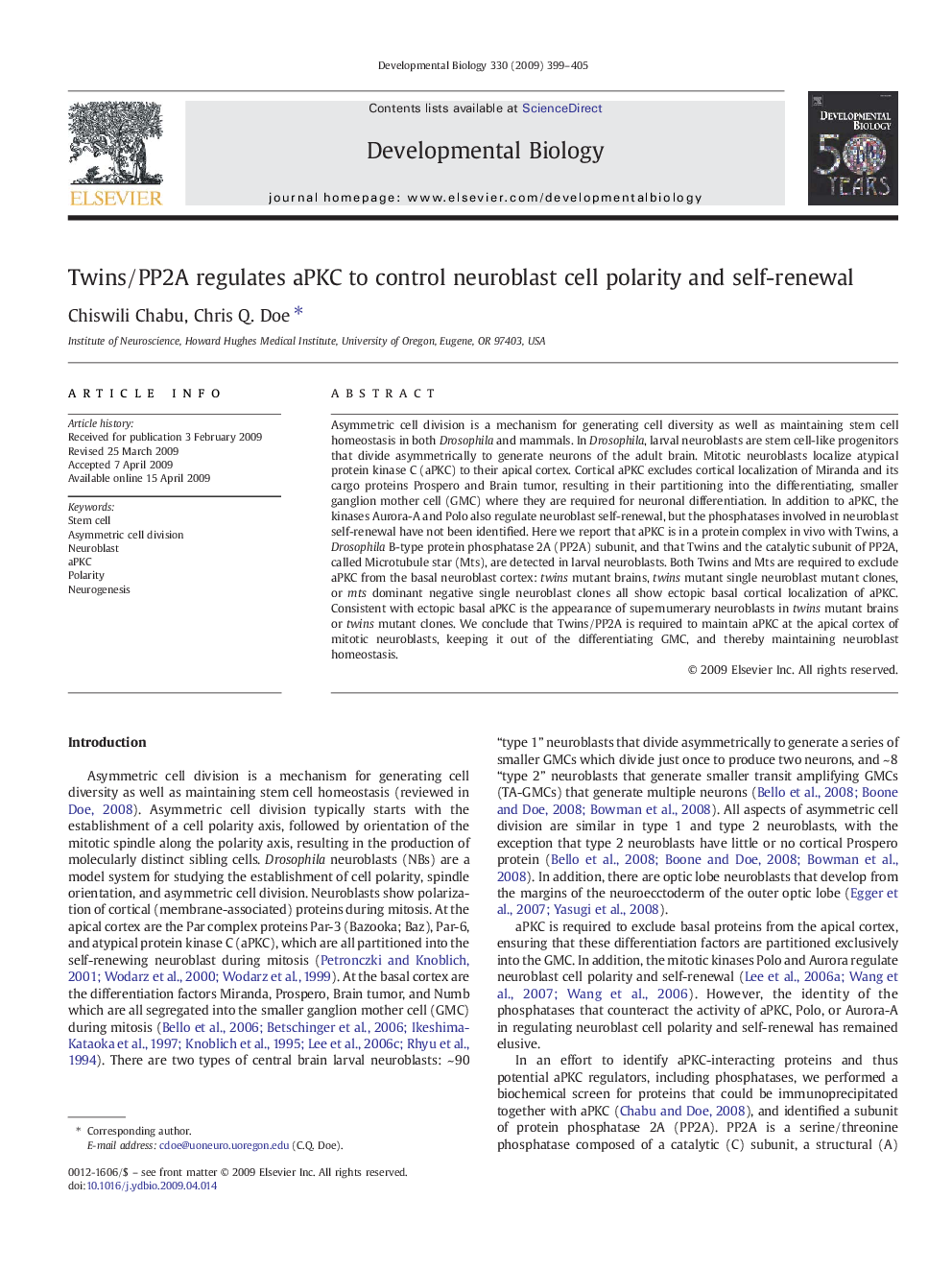| کد مقاله | کد نشریه | سال انتشار | مقاله انگلیسی | نسخه تمام متن |
|---|---|---|---|---|
| 2174146 | 1549573 | 2009 | 7 صفحه PDF | دانلود رایگان |

Asymmetric cell division is a mechanism for generating cell diversity as well as maintaining stem cell homeostasis in both Drosophila and mammals. In Drosophila, larval neuroblasts are stem cell-like progenitors that divide asymmetrically to generate neurons of the adult brain. Mitotic neuroblasts localize atypical protein kinase C (aPKC) to their apical cortex. Cortical aPKC excludes cortical localization of Miranda and its cargo proteins Prospero and Brain tumor, resulting in their partitioning into the differentiating, smaller ganglion mother cell (GMC) where they are required for neuronal differentiation. In addition to aPKC, the kinases Aurora-A and Polo also regulate neuroblast self-renewal, but the phosphatases involved in neuroblast self-renewal have not been identified. Here we report that aPKC is in a protein complex in vivo with Twins, a Drosophila B-type protein phosphatase 2A (PP2A) subunit, and that Twins and the catalytic subunit of PP2A, called Microtubule star (Mts), are detected in larval neuroblasts. Both Twins and Mts are required to exclude aPKC from the basal neuroblast cortex: twins mutant brains, twins mutant single neuroblast mutant clones, or mts dominant negative single neuroblast clones all show ectopic basal cortical localization of aPKC. Consistent with ectopic basal aPKC is the appearance of supernumerary neuroblasts in twins mutant brains or twins mutant clones. We conclude that Twins/PP2A is required to maintain aPKC at the apical cortex of mitotic neuroblasts, keeping it out of the differentiating GMC, and thereby maintaining neuroblast homeostasis.
Journal: Developmental Biology - Volume 330, Issue 2, 15 June 2009, Pages 399–405